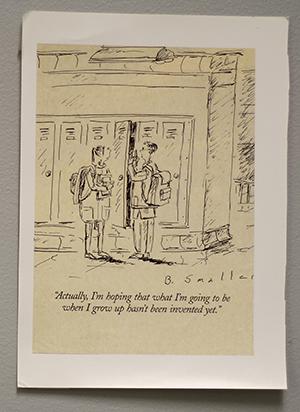Katherine, you write for Slate, including a Fresca on the first gay couple to be married on a military base. But you’re also Director of Traffic and Social Media Strategy here at Slate, which means … well, what does it mean?
Simply put, I’m in charge of all of our social media initiatives and traffic efforts. I also oversee a few blogs, like the Slatest and Behold. Ultimately, my job is to make sure Slate is always growing its audience.
How do you measure that?
I’ll sign into a tool called Chartbeat to get real-time data on what stories are the most popular. And I use Omniture, an analytics tool, to look at longer-term traffic trends. The stuff I look at the most closely is our total uniques so far for the month, our most social stories from the day before, and which blogs are doing the best in total monthly UVs …
Wait, hold on for a second here. Uniques? Most social? Total monthly UVs? Can you demystify those terms for us?
The metric that is most important to us at Slate is “unique visitors.” We want to get as many individual people in to read the site as possible. We are also really interested in finding new readers who come to Slate through outside websites, not just through the home page. Social media referrers are especially valuable to us, because social sharing helps amplify our content. So we track which stories get the most social total referrers and consider those “the most social” stories. Total monthly UVs is something I look at because it’s the total of how many individuals have come to the site as a whole, as well as different subsets, like blogs.
So, in essence, what you do often requires a lot of careful monitoring of what does well on the Slate. And a lot of numbers crunching. How do you take what you do and make relevant and palatable for the rest of the staff—other writers and editors, for instance?
I get to work with and interact with most people from all parts of the company, in New York and Washington, D.C. I do traffic analyses for individual editors and writers, teach them how to use tools, and answer questions about traffic and social media, so I stay in contact with most of staff. I also work with our tech and product team members on projects like traffic partnerships, mobile development, and video-view growth.
If I see an interesting trend or a lesson to be learned from a story that has gone viral, I’ll send an email to the staff explaining what I think we can all learn from the success. At the beginning of the month, I often encourage everyone to check out our custom-built traffic tool to see how their monthly numbers looked, and I highlight the items that got the most “sideways” traffic, that is, traffic that came from outside sources, like Facebook, Twitter, Google, or referrals from other news websites.
So what kinds of content give Slate “monster traffic,” as you often call it? Is there some type of pattern that you’ve been able to gather from working at Slate for the last three years?
One thing that’s great is that I can still be surprised by what does really well. There isn’t a magic formula, but some patterns we’ve seen over time are strongly worded, timely takes on the news, like “Kansas’ Anti-Gay Segregation Bill is an Abomination,” can be great for viral traffic. Items that people find both compelling and service-y, like “Why Drowning Doesn’t Look Like Drowning” are also great. Another category is items that are funny and clever and give you a strong reason to want to share, like “The Adele Dazeem Name Generator,” which allowed people to “Travoltify” their own name and share it with their friends. This was inspired by John Travolta botching Idina Menzel’s name at the Oscars. That widget was actually the most popular story in the history of Slate.

Screenshot via Chartbeat
Why do you think people share what they share? Do they share an article because they love it, or they want to be perceived in a certain way?
People definitely share when they strongly agree with an article or message. People also share when they hate something passionately, but either way, sharing is about how someone wants to be perceived publicly by others. Our advice columnist, Prudie, is one of our most read features, but she’s not one of our most shared. Not as many people say publicly, “I read this article about a woman discovering her husband’s porn addiction, and you should too.” But they still read it.
What’s the biggest challenge for Slate in terms of traffic/social media?
We always want to grow—there’s no “we’ve reached our goals so we don’t have to worry about traffic anymore.” We always have to be thinking ahead to figure out how to keep momentum going no matter what. In 2014, Slate is growing like crazy. We are continuing to see an explosion of growth, especially in visitors reading Slate on their mobile devices. We are very focused on keeping that growth going and capitalizing on it.

Photo by Juliana Jiménez Jaramillo
I have to say—your job is probably pretty different than what you imagined for yourself as a kid growing up in Atlanta. Am I right?
I wanted to be an actress, a politician, or a filmmaker. I actually have a New Yorker cartoon in my office of two kids with backpacks at lockers and the caption is: “Actually, I’m hoping that what I’m going to be when I grow up hasn’t been invented yet.” That was probably true when I was a kid to some extent.
